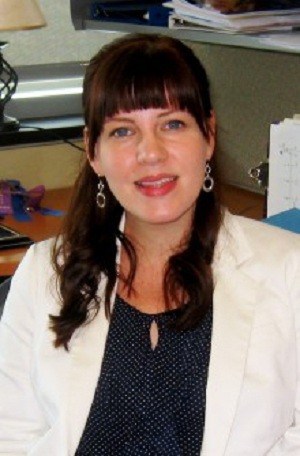Researcher Contributes to Groundbreaking Study of Genetics, Inheritance
| April 7, 2015 | A study explaining a long observed but little understood phenomenon that challenges the basic assumptions of genetic inheritance has been published by researchers that include University of Arkansas for Medical Sciences (UAMS) researcher Alison Harrill, Ph.D.
The study, spearheaded by researchers at the University of North Carolina at Chapel Hill, explains why a certain gene region in mice gets passed on to offspring more often than it should. Harrill, an assistant professor in the UAMS Fay W. Boozman College of Public Health, provided mouse genetic sequence data.

Alison Harrill, Ph.D.
“It’s an exciting advancement for the field of genetics,” said Harrill of the research, recently published in the journal PLoS Genetics.
The study examined patterns of inheritance in mouse offspring that were bred from eight genetically unique mouse strains. The mouse population studied resulted from crossing those strains with each other such that the offspring had a randomized complement of genes inherited from each of the eight founder strains. The expected result was an equal chance of original genetic material being passed along to offspring from each founder strain.
“If you think about the way that Mendelian genetics works,” said Harrill, referring to the 19th century scientist whose study of heredity is considered foundational to genetics, “you would expect transmission of these genes to be equal, with an equal probability of inheriting each of two copies of every gene from both parents.”
But researchers found that a gene region on chromosome 2 was inherited far more frequently than it should. A gene called “responder to meiotic drive 2,” or R2d2, was breaking Mendel’s law of genetic segregation. The more copies of the gene the mice had, the more likely they were to contribute a specific gene region to the offspring. Mice harboring fewer copies of the R2d2 were not able to “selfishly” pass on the gene region.
“If we think about passing genes to our offspring, we as people get one copy from mom and one copy from dad, and you would expect your children to have an equal chance of receiving each version of the parent’s genes,” Harrill said. “But there are known exceptions to the rule, and these can cause disorders such as Down syndrome. This work identified an elegant system that could be used to begin to understand the mechanisms behind unexpected gene transmission and how they might be corrected or prevented.”
Harrill’s work at UAMS focuses on finding links between genetics and adverse drug or chemical reactions. She mapped the genome of mice she was working with while studying safety risks of green tea extract and realized it might be useful in the UNC study.
“We performed genomic mapping to see what gene variants contribute to having a severe liver reaction to green tea extract, which has been reported in the clinic,” Harrill said. “We knew this study was going on at UNC, and they required more data to test their idea. Because we were using the same mouse population, we were in a unique position to provide additional genetic data to the UNC team.”
The discovery, in addition to solving a centuries-old puzzle in genetics, could contribute to human health in a number of ways, Harrill said. For instance, geneticists calculating the chances of certain genetic disorders being transmitted from parent to child base their expectations on Mendel’s law. Knowing the driver behind exceptions to the law, with more research, could one day help refine those predictions or even alter them.